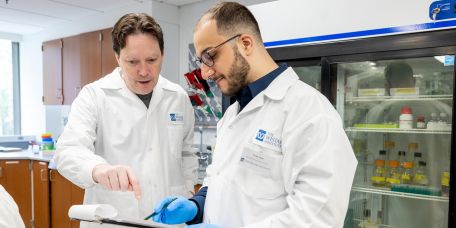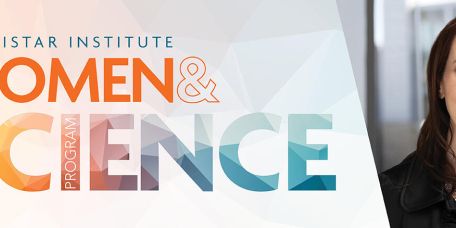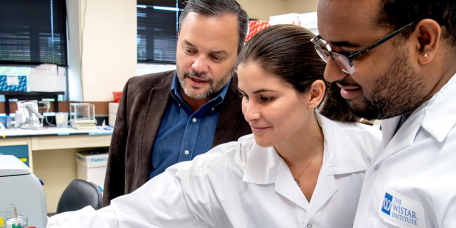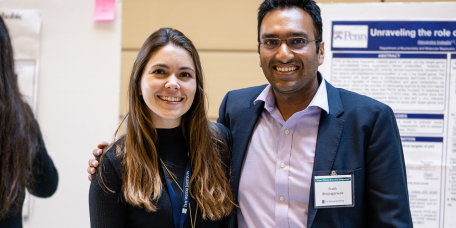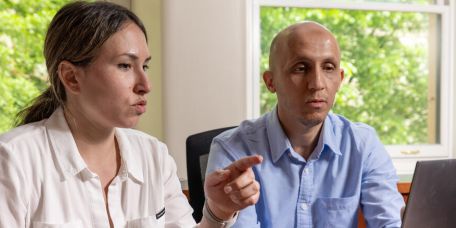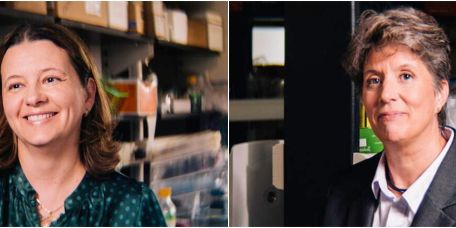The Wistar Institute
The Wistar Institute Appoints Legal and Life Sciences Expert Squire Servance to Its Board of Trustees
PHILADELPHIA — (MARCH, 30, 2023) — The Wistar Institute, a global leader in biomedical research in cancer, immunology and infectious disease, is pleased to welcome Squire Servance, founder and managing partner for the Princeton, NJ-based life scienc…
Researchers Identify a Plant-based Compound that Inhibits Reactivation of the HIV Viral Reservoir, Giving the Immune System a Break
PHILADELPHIA — (MARCH 28, 2023) — As of 2022, approximately 1.2 million people in the United States are living with HIV. Antiretroviral therapies have enabled many of these individuals to live productive, symptom-free lives, but a cure that permanen…
Women in Science Virtual Event Thursday April 27, 2023 at 5 pm
Dr. Maria Elena Bottazzi is the distinguished speaker for The Wistar Institute Women & Science Program on April 27, 2023 at 5:00 – 6:00 p.m. Dr. Bottazzi is Associate Dean of the National School of Tropical Medicine, Professor of Pediatric…
With Philadelphia Foundation Grant, Wistar Advances COVID-19 and Monkeypox Vaccine Response in Vulnerable Populations
An $80,000 grant for The Wistar Institute’s HIV-1 Patient Partnership for Basic Research program from the Robert I. Jacobs Fund of Philadelphia Foundation not only advances ongoing basic research into ways to prevent, treat and ultimately cure HIV…
Q&A with Pratik Bhojnagarwala and Alexandra Indeglia, Organizers of Wistar’s First Trainee Research Symposium
On Friday, February 24, 2023, more than 175 postdoctoral, graduate, and undergraduate students from around Philadelphia came together for the very first Wistar Institute Trainee Research Symposium. The Symposium was developed and run by leaders of W…
What We Now Know About Long Covid
Dr. Luis J. Montaner and lab find common, persistent symptoms for long-haulers by reviewing a multitude of research studies. An international team of researchers led by The Wistar Institute’s lead scientist on HIV-cure research has published a revie…
Wistar Scientists Uses Artificial Intelligence to Identify Viruses Related to Cancer
Some cancers are linked to viral infections. Studying viruses found in tumor cells can reveal important information in the development of more effective cancer treatments. Wistar researchers developed a tool to study the expression of cancer-related…
The Wistar Institute and Stowers Institute for Medical Research in Kansas City Announces Friendly Super Bowl Wager between the Two Biomedical Research Institutes
MEDIA ADVISORY WHAT:The Wistar Institute and Stowers Institute for Medical Research in Kansas City Announces Friendly Super Bowl Wager between the Two Biomedical Research Institutes The Wistar Institute have made a friendly wager with Stowers Instit…
Wistar Scientists Identify a Gene Signature to Assess Cancer Risk
PHILADELPHIA — (FEBRUARY, 6, 2023) — In a paper published in PNAS, Maureen Murphy, Ph.D., Deputy Director of Wistar’s Ellen and Ronald Caplan Cancer Center and Ira Brind Professor and Program Leader in the Molecular & Cellular Oncogenesis Progra…
Wistar Scientists Study Ferroptosis to Improve Cancer Treatments
What clues can a cell’s death reveal for immunotherapies for treating cancer and other diseases? Wistar scientists Dr. Yulia Nefedova, associate professor in the Immunology, Microenvironment & Metastasis Program in the Ellen and Ronald Caplan Ca…

